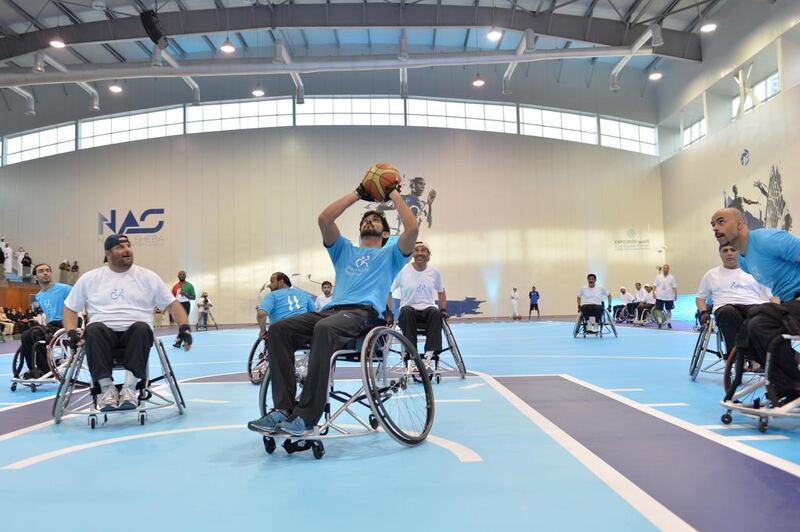Just before half time, the trouble started. From the stands, objects were hurled by fans of both sides. Some players were caught in the crossfire and received injuries.
When order could not be restored, riot police intervened, using tear gas to disperse the fighting between supporters of bitter Istanbul rivals Galatasaray and Besiktas.
No, this was not a football game – it was wheelchair basketball.
Scenes such as this one from 2012 are an exception but also an eye-opening indication of the emotion this unique sport can provoke.
On the court, it is as physical as any game on the planet and, among the spectators, there is a passion and rivalry more often associated with football.
This weekend, the UAE has a chance to see how competitive, and popular, the sport has become.
Starting tomorrow, teams from the UAE, Oman, Kuwait, Syria, Palestine, Jordan, Iraq and Saudi Arabia will compete for the 6th Fazza International Wheelchair Basketball Championships-IWBF West Asian Championship 2014 at Al Ahli Club in Dubai.
It will not be a viewing experience for the faint-hearted.
The abilities of players are rated on a scale of 1 to 4.5. Minimally disabled athletes – say, with one disabled leg – are classified as a 4.5. Ones with the highest degree of disability – a paraplegic with a complete injury below the chest, for instance – are given a score of 1.0. The five players on court – the same number as regular basketball – cannot exceed a total of 14 points at any time.
Where relevant, non-disabled athletes are either a 4.5 in Canada or a 5.0 in Europe, but they cannot compete at official international level or in Olympic competitions.
Apart from the obvious – different chairs, which can cost up to US$5,000 (Dh18,365) for different class players – few concessions are made for these immensely powerful athletes.
The height of the net is the same as regular basketball, 10 feet, as is the size of court. Most of the rules are instantly familiar to anyone with a passing knowledge of basketball, with a few minor changes.
Travelling, for example, is called when a player touches his wheel twice before passing or shooting. Many let the ball bounce a few feet ahead of them and then chase it as they make a break.
The action can be frightening. There are major tangles, collisions and crashes. Players often fall out of their chairs, only to dust themselves off and climb back in with what seems little inconvenience. Sometimes there are fights.
It is why the sport has so often been compared to wheelchair rugby, which has earned the nickname “murderball” because of its physicality.
There are moments of supreme skill as well, seen in breakaway dribbles, passing moves and how competitors handle their chairs before firing off two- and three-point throws.
The Fazza Championships have evolved each year. Only five teams from the Arabian Gulf took part six years ago. Last year, the likes of Japan, China and Germany clashed with the UAE and other Middle Eastern countries.
This year’s tournament is an exclusively West Asian affair and also acts as a qualifying tournament for the Asian Paralympic Games in Incheon, South Korea, in October.
That prize can only add to the intensity of the tournament, and it was telling that Thani Juma Berregad, head of the organising committee, described the players as “wheelchair warriors” ahead of the tournament.
Warriors preparing for battle.
akhaled@thenational.ae
Follow us on Twitter at @SprtNationalUAE





